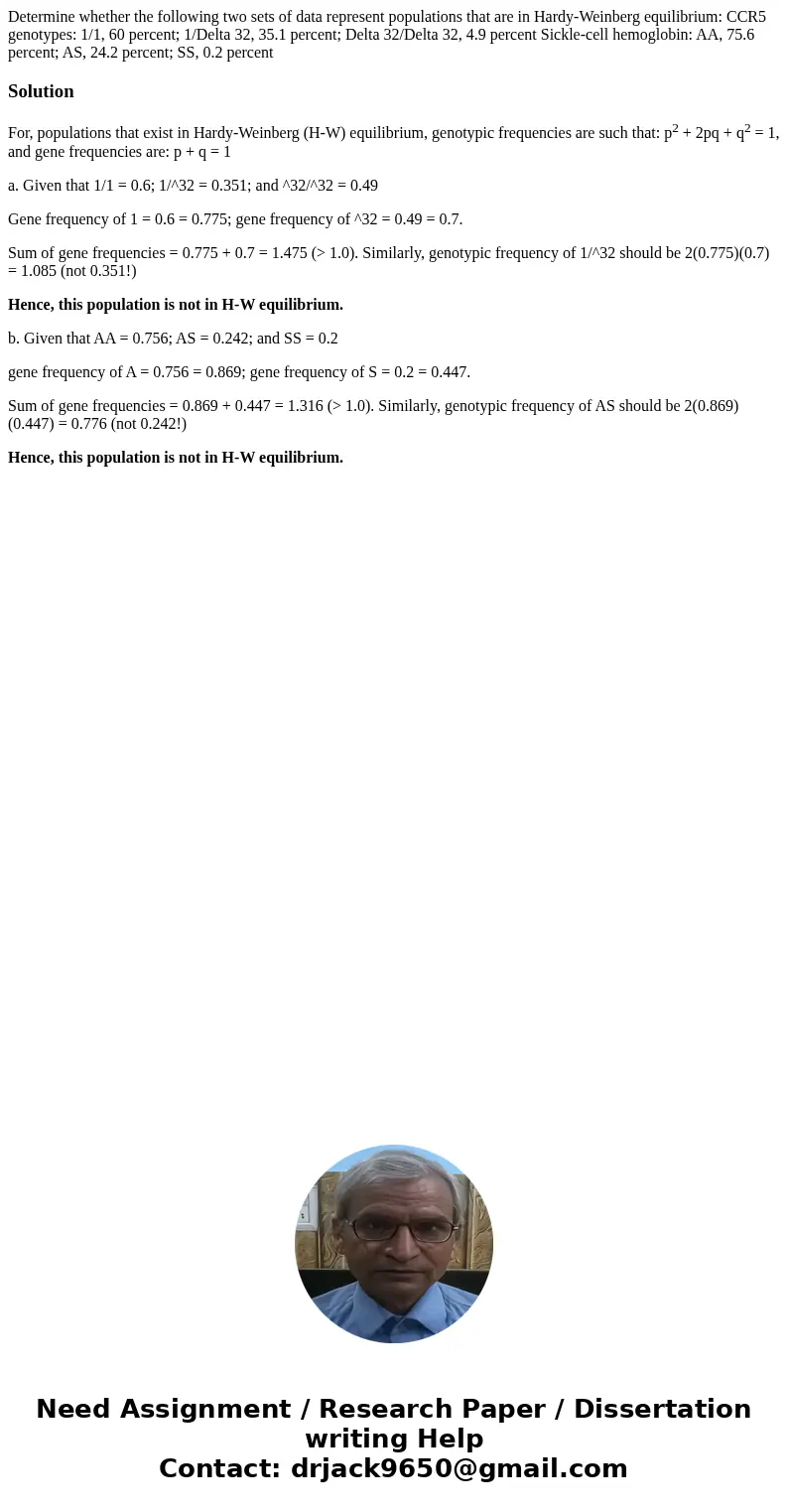Determine whether the following two sets of data represent p
Solution
For, populations that exist in Hardy-Weinberg (H-W) equilibrium, genotypic frequencies are such that: p2 + 2pq + q2 = 1, and gene frequencies are: p + q = 1
a. Given that 1/1 = 0.6; 1/^32 = 0.351; and ^32/^32 = 0.49
Gene frequency of 1 = 0.6 = 0.775; gene frequency of ^32 = 0.49 = 0.7.
Sum of gene frequencies = 0.775 + 0.7 = 1.475 (> 1.0). Similarly, genotypic frequency of 1/^32 should be 2(0.775)(0.7) = 1.085 (not 0.351!)
Hence, this population is not in H-W equilibrium.
b. Given that AA = 0.756; AS = 0.242; and SS = 0.2
gene frequency of A = 0.756 = 0.869; gene frequency of S = 0.2 = 0.447.
Sum of gene frequencies = 0.869 + 0.447 = 1.316 (> 1.0). Similarly, genotypic frequency of AS should be 2(0.869)(0.447) = 0.776 (not 0.242!)
Hence, this population is not in H-W equilibrium.

 Homework Sourse
Homework Sourse